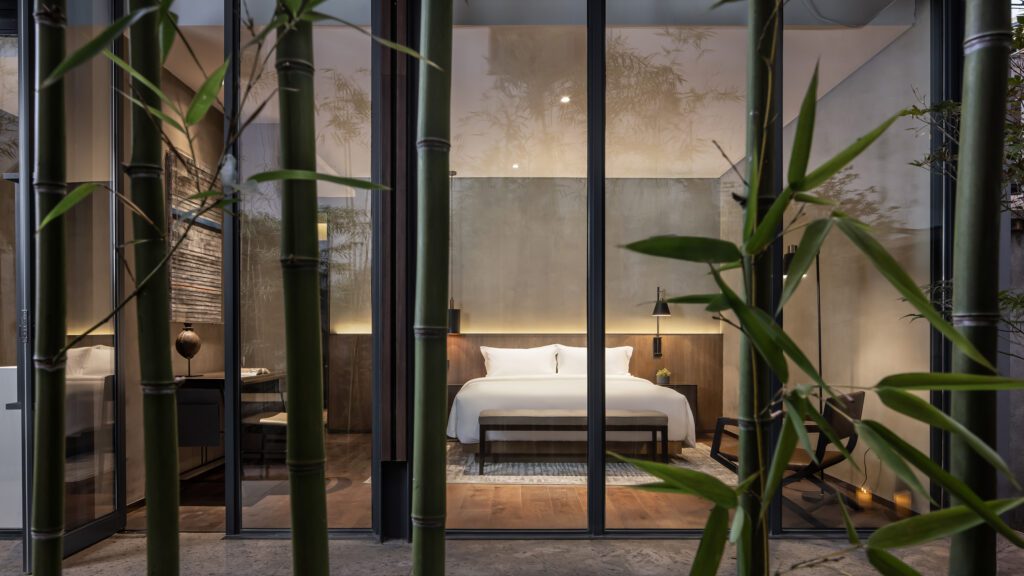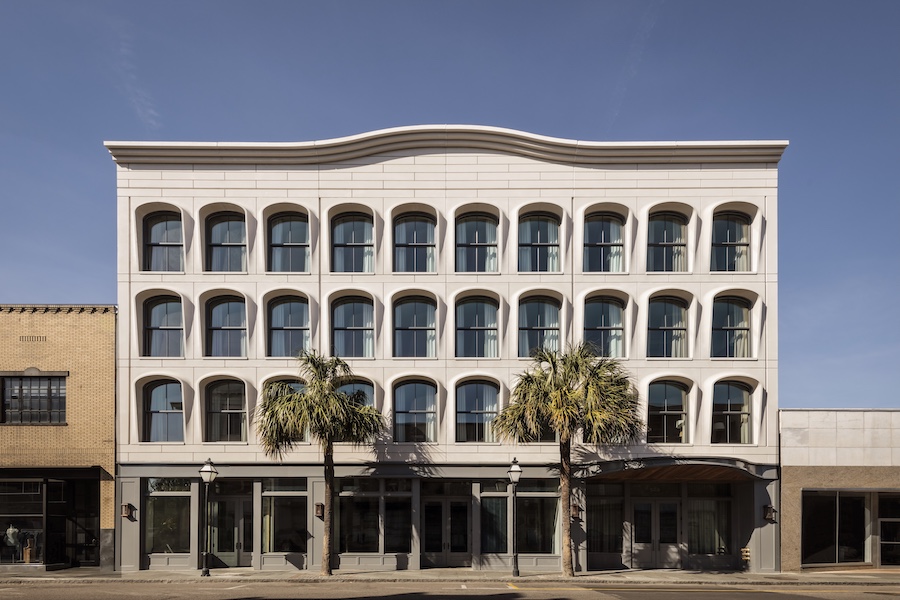Shanthi Boutique Hotel Blends Ancient and Modern
Jiakun Architects and CSD Design bring a three-dynasty structure into the 21st century

Songyang, in China’s Zhejiang province, is one of the world’s best kept secrets. The home to more than a hundred ancient villages, the region’s difficult access keeps it close to nature and a world away from he traffic and noise of the city. It’s this seclusion and proximity to aged trees, ancient temples, and historic houses that has created a sort of designers’ utopia, offering grounds for a modern interpretations to the ancient Chinese region. Recently, Shanthi Boutique Hotel, designed by Jiakun Architects and CSD Design, opened its doors to Songyang City.
“We want to create an idyllic existence for guests coming here,” says CSD principal Zhang Can, lead designer of Shanthi Boutique Hotel. “We wanted to present the natural and unrestrained life beyond the street life—a secret place intertwined culture and nature.”

To access the property, guests are guided along Quingyon road, across a Confucian temple, and through the courtyard on the south side of the old district’s committee building. Guests then arrive at the “small hall” of the Shanthi Boutique Hotel—a curation of scenes from the area’s life, history, and nature within a courtyard.
The property mainly consists of two elements—the original structures and new construction—but both parts of the hotel follow the same logic of respecting and integrating all objects on the site, including buildings and trees.

“The hotel is located in a unique place,” says Can. “The Songyang Wenli Community Center has gone through three dynasties. We hope that this hotel observes and displays the history in a modern context.”
Nature is a strong and constant presence across Shanthi Boutique Hotel. Reception has been designed around an old tree, while terrazzo-like materials are featured indoors and outdoors, blurring the boundaries of space.
A cozy “fireside lounge” was placed at the border of the committee buildings and the newly built guestrooms, becoming the intersection of old and new. Original wood doors, cascades of wooden trusses, and tall dark brown wood baseboards add to the dreamy atmosphere of ancient China, while artistic elements and furniture bring the space into the present.
Projects:
Shanthi Boutique Hotel Blends Ancient and Modern
Jiakun Architects and CSD Design bring a three-dynasty structure into the 21st century
Songyang, in China’s Zhejiang province, is one of the world’s best kept secrets. The home to more than a hundred ancient villages, the region’s difficult access keeps it close to nature and a world away from he traffic and noise of the city. It’s this seclusion and proximity to aged trees, ancient temples, and historic houses that has created a sort of designers’ utopia, offering grounds for a modern interpretations to the ancient Chinese region. Recently, Shanthi Boutique Hotel, designed by Jiakun Architects and CSD Design, opened its doors to Songyang City.
“We want to create an idyllic existence for guests coming here,” says CSD principal Zhang Can, lead designer of Shanthi Boutique Hotel. “We wanted to present the natural and unrestrained life beyond the street life—a secret place intertwined culture and nature.”

To access the property, guests are guided along Quingyon road, across a Confucian temple, and through the courtyard on the south side of the old district’s committee building. Guests then arrive at the “small hall” of the Shanthi Boutique Hotel—a curation of scenes from the area’s life, history, and nature within a courtyard.
The property mainly consists of two elements—the original structures and new construction—but both parts of the hotel follow the same logic of respecting and integrating all objects on the site, including buildings and trees.

“The hotel is located in a unique place,” says Can. “The Songyang Wenli Community Center has gone through three dynasties. We hope that this hotel observes and displays the history in a modern context.”
Nature is a strong and constant presence across Shanthi Boutique Hotel. Reception has been designed around an old tree, while terrazzo-like materials are featured indoors and outdoors, blurring the boundaries of space.
A cozy “fireside lounge” was placed at the border of the committee buildings and the newly built guestrooms, becoming the intersection of old and new. Original wood doors, cascades of wooden trusses, and tall dark brown wood baseboards add to the dreamy atmosphere of ancient China, while artistic elements and furniture bring the space into the present.


